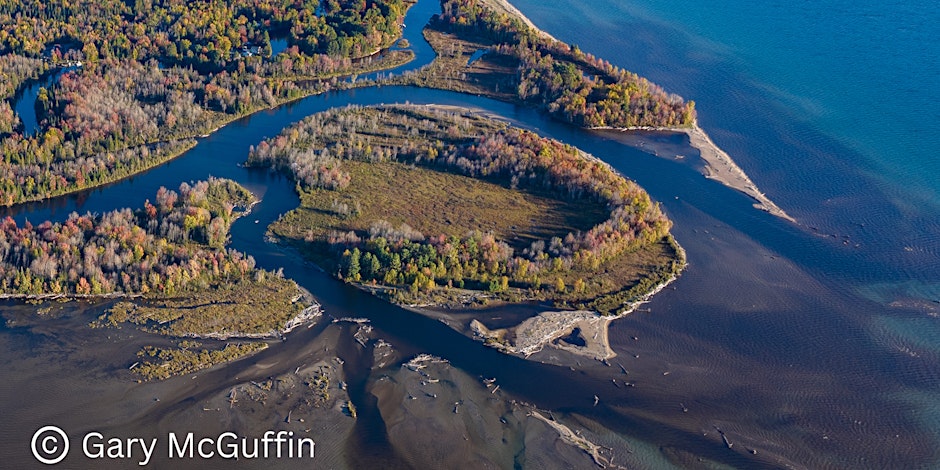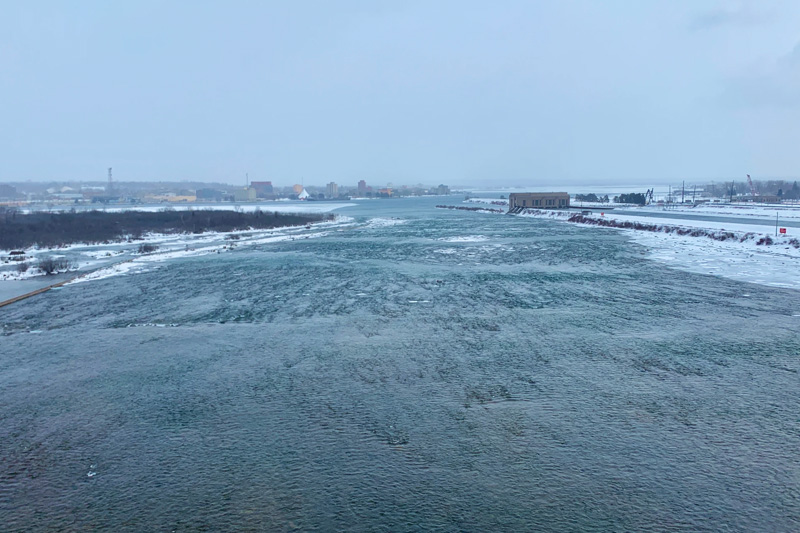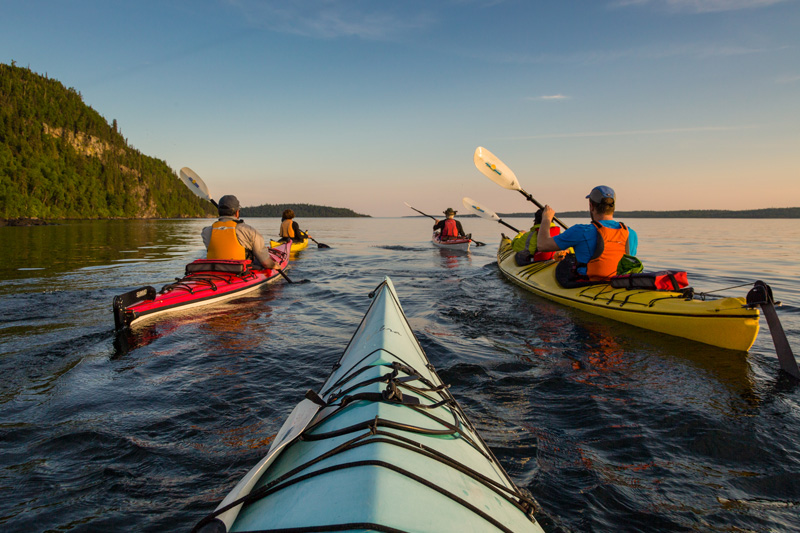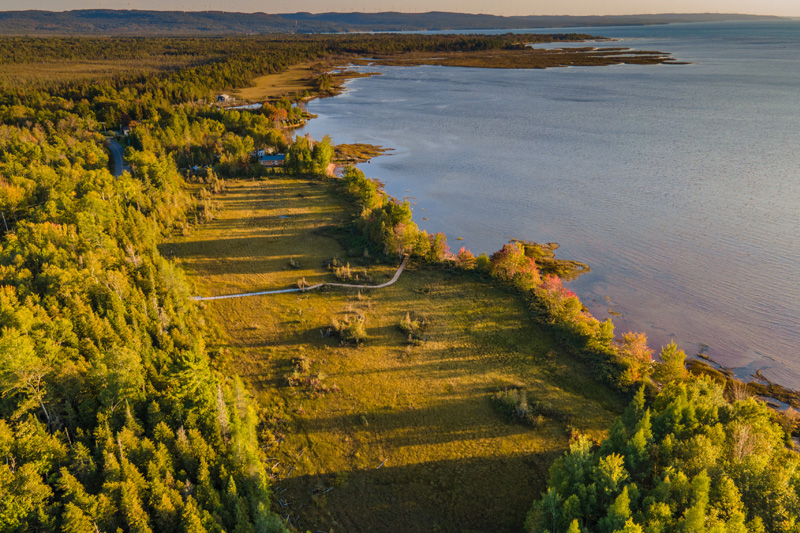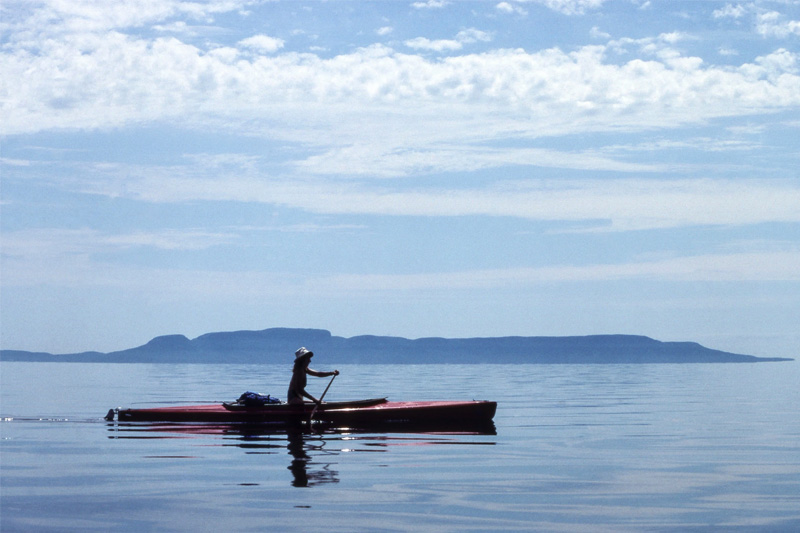Click here to sign-up today!…
LSWC Blog
Autumn Nectar for Bees and Butterflies Ontario’s Native Asters
With autumn comes the emergence of two major groups of native wildflowers: goldenrods (Solidago sp.) and asters (Symphyotrichum spp.). Their late blooming time, after other native wildflowers have faded, makes these wildflowers ecologically important to many species. They are a vital food source to pollinators; especially native bumblebees and south-migrating Monarch butterflies (Danaus plexippus), which feed on the large amounts of nectar and pollen produced by aster flowers. When the flowers emerge in September, the vibrant florets of aster species attract bees and butterflies. Both groups of wildflowers are highly diverse; each constituting more than 15 species. Native wildflowers commonly…
Using the Merlin Bird ID App to Identify Birds
Photo: American Redstart (m) photographed in the Algoma Region (August 2023). Photo by Matthew Palarchio. Birding (birdwatching) is very popular among the Naturalist community around Lake Superior, (and more broadly, the entire Great Lakes Region), showing strong growth in popularity over the past few decades. Some naturalist clubs, including Nature London, have entire committees devoted to birding. Until recently, many birders relied primarily on photographic field guides, bird song mnemonics, and visual observation to identify local bird species. Although these identification tools are still relevant today, the release of Merlin Bird ID by Cornell University in the 2010s has…
Francis Hilb Preserve Field Trip
Field trip day for Bryan Nanni’s grade 4-5 class at Mountainview Public School — a discovery of the biodiversity of life in the forest and wetlands. Through hands on land-based learning, games and self-discovery, this LSWC education program day left students with a sense of wonder about the wetlands. Learning by touching and smelling, the students get a closeup introduction to meat-eating, insectivorous pitcher plants, and the beautiful woodland flower community. All the while we learn together of our shared responsibility to take care of these special natural communities that take care of us! Cailyn Carscadden, the Trent University…
Water Protectors
The year is 1850. A group of women and men are alongside the St. Marys River for a water ceremony. They are singing Anishinaabe songs matched to the pulsing of hand drums. The fast pace is full of energy, almost cheery, yet all of the singers have a serious tone and their eyes gaze forward with purpose. Everyone looks towards the centre of the circle where cotton blankets are occupied by two elders. On the West side, the youngest and most resilient of the group stand with their backs blocking the wind from the rest of the group. Their bare…
What is the Lake Superior Water Trail? And Other Q&As
For Starters… What is a water trail? A water trail is a navigable trail along a body of water such as a river, lake, or coastline that is used for recreational purposes such as kayaking, canoeing, or sailing. A water trail is also called a waterway, a blue highway, or a blueway. What’s the Lake Superior Water Trail? The Lake Superior Water Trail (LSWT) is a 1000 km (600 mile) water trail along the Canadian coastline of Lake Superior between Gros Cap Marina Park on Whitefish Bay and Lorne Allard Fisherman’s Park in Thunder Bay. The water trail is a…
More Than A Trail, More Than A Job
Water Trail Experience Development Coordinator, Peter Greve, works to bring the Lake Superior Water Trail to Life The Lake Superior Watershed Conservancy (LSWC) welcomes a new team member! The LSWC has hired recent Western University graduate Peter Greve to be the Water Trail Experience Development Coordinator. Greve is working to connect communities along the Trail through shared ecological and cultural interpretive guided experiences. Developing these opportunities along the Water Trail will enhance economic diversity on the North Shore and the overall protection of the Lake Superior ecosystem. “I am excited to learn more about different communities on Lake Superior…
The History of Francis Hilb Preserve
Frank and Leslie Hilb of Goulais River, Ontario donated a 3.5 hectare / 9-acre property on Goulais Bay to the Lake Superior Watershed Conservancy for conservation and environmental education in memory of Frank’s father, Francis. The Lake Superior Watershed Conservancy was awarded a Great Lakes Guardian Fund Grant to assist with the preservation of the wetland. LSWC is working with students and teachers in the Algoma District School Board to build an educational Trail and Boardwalk through the Preserve to expand understanding and appreciation for this critical Great Lakes wetland. The Francis Hilb Preserve is a fen, a type of…
History of The Dr. Fredrick van Nus Preserve
In 2011, the Lake Superior Watershed Conservancy purchased a 32 hectare/ 80-acre hardwood forest at the headwaters of Big Carp Creek in Prince Township west of Sault Ste Marie. The Dr. Fredrick van Nus Preserve abuts a Sault Ste Marie Regional Conservation Authority property, and, in 2017, the Saulteaux Voyageur Trail Association’s Walls Lake Loop trail will be expanded into the Preserve for hikers and snowshoers to enjoy the property year round. The property belonged to Dr. Fredrick van Nus. Alongside his profession as an ophthalmologist, he was a humanitarian, naturalist, conservationist and environmentalist. When he passed away, his family…
The Freshwater Sea
It is not surprising that Lake Superior is often described as a freshwater sea. There’s enough water in the lake to cover the North and South American continents a foot deep. In fact, its 3-quadrillion gallons could fill all the other Great Lakes plus three more Lake Eries as well. It takes an average of 191 years for a drop of water to circulate the basin before exiting at the Lake’s only natural outflow: the St. Mary’s River at Sault Ste Marie. Two billion years ago a volcanic rift that nearly tore the continent apart, formed the basin which filled…

